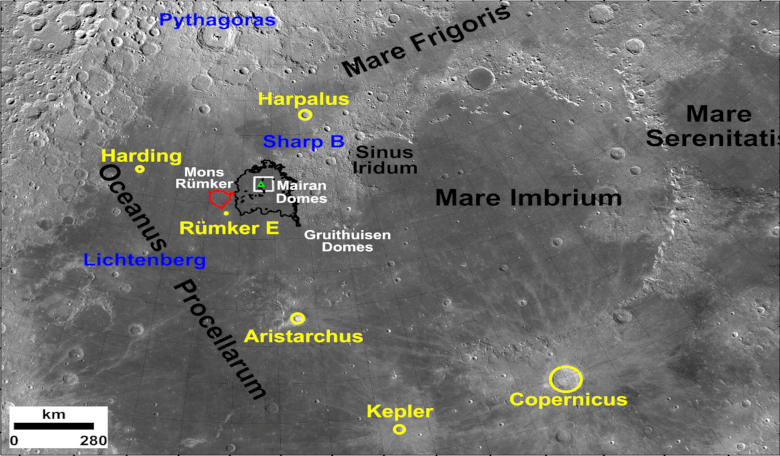Chinese scientists have released their early-stage findings of moon rocks returned to Earth as part of the country’s Chang'e-5 sample return mission, and along with regolith from the landing site, the sample also contains a portion of fragments that have distinctly different, 'exotic' chemical compositions.
On 16 December 2020, China’s robotic Chang'e-5 mission, became the first mission in nearly 50 years to head to the Moon, grab samples and return the lunar payload to Earth for study.
Its destination was a landing site at Northern Oceanus Procellarum (43.06°N, 51.92°W) near a huge volcanic complex known as Mons Rümker and it was chose specifically because it is one of the youngest geological areas of the Moon.
With an age of just two billion years, scientists hope that the 1731 grams of samples collected at this region could shed light on, amongst other things, the Moon's impact history, regolith formation, deep lunar mantle processes and if late-stage volcanism occurred on our celestial companion as some think it did.
While research gets underway to provide answers to these fundamental questions, a new study is paving the way forward by giving an insight into the chemical make-up of the samples and how they link to nearby geological features.
Presented by PhD student Mr Yuqi Qian, at the recent Europlanet Science Congress (EPSC) 2021 virtual meeting, the study suggests that ninety percent of the materials collected by Chang'e-5 are 'mare basalts' and likely derive from the landing site and its immediate surroundings.
Mare basalts are a type of volcanic rock that are formed from the rapid cooling of low-viscosity lava; more than 90 percent of all volcanic rock on Earth is basalt.
Mare basalts are thought to have formed in the same way and they can be seen as huge, dark, basaltic plains on the nearside of the Moon.
But says Qian, ten percent of the fragments have distinctly different, 'exotic' chemical compositions, that may preserve records of other parts of the lunar surface.
Some of these fragments are in the form of bead-like droplets, the type formed from rapidly cooled volcanic glassy material.
Qian and colleagues from Brown University and the University of Münster suggest that these glassy droplets came from now extinct volcanic vents known as 'Rima Mairan' and 'Rima Sharp' located roughly 230 and 160 kilometers southeast and northeast of the Chang'e-5 landing site. These fragments could give insights into past episodes of explosive, fountain-like volcanic activity on the Moon say the team.
The team has also looked at the potential sources of impact-related fragments. The young geological age of the rocks at the landing site narrows the search, as only craters with ages less than 2 billion years can be responsible, and these are relatively rare on the side of the Moon that faces Earth.
By using simulations to trace back to potential parent craters, and comparing their ages through comprehensive literature studies, Qian and colleagues show that Harpalus, a 39 kilometer wide impact crater that lies on the Mare Frigoris, is a significant contributor to the many exotic fragments collected by Chang’e-5.
However, given the composition of some of the fragments, material may have been thrown into Chang'e-5 landing area from nearly 1,300 kilometers away, say the team.
In addition to exotic materials delivered by distal impacts, some components may originate from silica-rich domes, while fragments from meteorites have also been identified which after further investigation could help determine the types of space rock that have impacted the Moon's surface over the eons.
"All of the local and exotic materials among the returned samples of Chang'e-5 can be used to answer a number of further scientific questions," said Qian. "In addressing these we shall deepen our understanding of the Moon's history and help prepare for further lunar exploration."
The presentation entitled, "The Exotic Materials at the Chang’e 5 Landing Site", can be found here; http://doi.org/10.5281/zenodo.5518268











